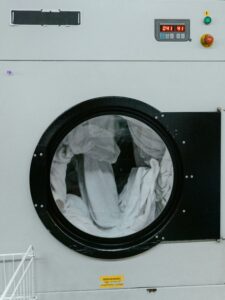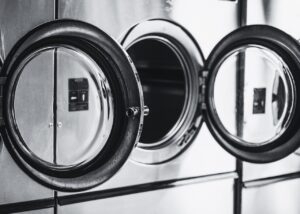Heating elements are an essential component in various appliances, including ovens, water heaters, and dryers. They are responsible for generating heat and ensuring that these appliances function properly. However, like any other mechanical part, heating elements can experience problems over time. These issues can range from minor malfunctions to complete failure, resulting in the appliance not working as it should.
Common Causes of Heating Element Problems
There are several common causes of heating element problems. One of the most common causes is overheating. When an appliance is used for extended periods or at high temperatures, the heating element can become overheated and eventually burn out. Another cause is wear and tear. Over time, the heating element can deteriorate due to constant use, resulting in reduced efficiency or complete failure.
Electrical issues can also lead to heating element problems. If there is a problem with the electrical supply or wiring, it can cause the heating element to malfunction or stop working altogether. Lastly, poor maintenance can contribute to heating element woes. Failure to clean the heating element regularly or neglecting to perform routine maintenance tasks can lead to dirt buildup, which can affect its performance.
Signs of a Faulty Heating Element
There are several signs that indicate a faulty heating element. One of the most obvious signs is when the appliance fails to heat up properly. If you notice that your oven takes longer than usual to reach the desired temperature or your water heater is not producing hot water, it could be a sign that the heating element is not functioning correctly.
Uneven heating is another sign of a faulty heating element. If you notice that your oven is cooking food unevenly or your dryer is leaving some clothes damp while others are dry, it could be due to a malfunctioning heating element. Additionally, if you detect a burning smell coming from your appliance or hear strange noises during operation, it could indicate a problem with the heating element.
Tools Needed for Troubleshooting and Repair
To troubleshoot and repair a faulty heating element, you will need a few tools. The most important tool is a multimeter, which is used to test the continuity of the heating element. A screwdriver is also necessary for removing the heating element from the appliance. Pliers may be needed to disconnect wires or tighten connections. A wire stripper is useful for removing insulation from wires when necessary. Lastly, if the heating element needs to be replaced, you will need a replacement heating element that is compatible with your appliance.
Safety Precautions to Take Before Repairing a Heating Element
Before attempting to repair a heating element, it is crucial to take certain safety precautions. First and foremost, always unplug the appliance from the power source before starting any repair work. This will prevent any accidental electrical shocks or injuries. Additionally, it is essential to wear protective gear such as gloves and safety glasses to protect yourself from any potential hazards.
When working with heating elements, it is important to avoid water and moisture. Water can conduct electricity and increase the risk of electrical shock. Therefore, make sure that the area where you are working is dry and free from any water sources. Lastly, if you are working on a gas-powered appliance, it is important to check for gas leaks before starting any repairs. Gas leaks can be extremely dangerous and should be addressed by a professional.
How to Test a Heating Element for Continuity
Testing a heating element for continuity is an important step in troubleshooting and diagnosing any problems. To test for continuity, you will need to use a multimeter. Here is a step-by-step guide on how to test a heating element for continuity:
1. Turn off the power supply to the appliance and unplug it from the outlet.
2. Locate the heating element in the appliance and remove any covers or panels that may be obstructing access to it.
3. Set your multimeter to the continuity or resistance setting.
4. Touch one probe of the multimeter to one terminal of the heating element and the other probe to the other terminal.
5. If the multimeter shows a reading of zero or close to zero, it means that there is continuity and the heating element is functioning properly. If the multimeter shows no reading or a high resistance reading, it indicates that there is no continuity and the heating element is faulty.
How to Replace a Faulty Heating Element
If you have determined that the heating element is faulty and needs to be replaced, here is a step-by-step guide on how to replace it:
1. Turn off the power supply to the appliance and unplug it from the outlet.
2. Locate the heating element in the appliance and remove any covers or panels that may be obstructing access to it.
3. Disconnect any wires or connectors that are attached to the heating element. Take note of their positions or take a picture for reference.
4. Use a screwdriver to remove any screws or fasteners that are holding the heating element in place.
5. Carefully remove the old heating element from the appliance.
6. Install the new heating element by following the reverse steps of removal.
7. Reconnect any wires or connectors, making sure they are properly secured.
8. Replace any covers or panels that were removed.
9. Plug in the appliance and turn on the power supply to test if the new heating element is working properly.
How to Clean a Dirty Heating Element
Regular cleaning of a heating element is essential for maintaining its performance and prolonging its lifespan. Here is a step-by-step guide on how to clean a dirty heating element:
1. Turn off the power supply to the appliance and unplug it from the outlet.
2. Locate the heating element in the appliance and remove any covers or panels that may be obstructing access to it.
3. Use a soft brush or cloth to remove any loose dirt or debris from the heating element.
4. Mix a solution of warm water and mild detergent.
5. Dip a cloth or sponge into the solution and gently wipe the heating element, removing any stubborn dirt or grime.
6. Rinse the cloth or sponge with clean water and wipe away any soap residue from the heating element.
7. Allow the heating element to dry completely before reassembling the appliance and plugging it back in.
Tips for Maintaining Your Heating Element
To keep your heating element in top shape and prevent problems from occurring, here are some tips for maintenance:
1. Regularly clean the heating element to remove any dirt or debris that may accumulate over time. This will help maintain its efficiency and prevent any potential issues.
2. Avoid overusing the appliance with the heating element. Overuse can lead to overheating and premature failure of the heating element.
3. Periodically check for any signs of wear and tear on the heating element, such as frayed wires or damaged connectors. If you notice any damage, it is important to address it promptly to prevent further problems.
4. Keep the appliance in a dry area to avoid moisture buildup, which can affect the performance of the heating element.
When to Call a Professional
While some heating element problems can be easily diagnosed and repaired by homeowners, there are instances when it is best to call a professional for assistance. If you are unsure about your ability to troubleshoot or repair a heating element, it is always safer to seek professional help.
Additionally, if you notice any warning signs such as sparks, smoke, or unusual odors coming from the appliance, it is important to stop using it immediately and call a professional for inspection and repair. These signs could indicate more serious electrical or mechanical issues that require the expertise of a trained technician.
Can Heating Element Issues in HVAC Systems Be Fixed Using Your Troubleshooting Guide?
Yes, troubleshooting HVAC system hiccups is an effective way to fix heating element issues. By following a troubleshooting guide, you can identify the problem and take steps to resolve it. This can save you time and money, as well as ensure that your HVAC system continues to function properly.
Keeping Your Heating Element in Top Shape
In conclusion, heating elements play a crucial role in the proper functioning of various appliances. Understanding the common causes of heating element problems and being able to identify the signs of a faulty heating element can help homeowners troubleshoot and address these issues promptly.
By following the proper safety precautions and using the necessary tools, homeowners can test and replace a faulty heating element if needed. Regular cleaning and maintenance of the heating element can also help prevent problems and prolong its lifespan.
However, it is important to know when it is best to call a professional for heating element repair. If you are unsure about your ability to safely troubleshoot or repair a heating element, or if you notice any warning signs, it is always recommended to seek professional assistance.
By taking these steps and keeping your heating element in top shape, you can ensure that your appliances continue to function properly and efficiently for years to come.



